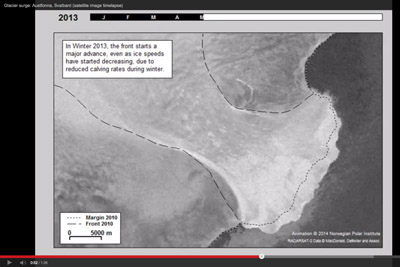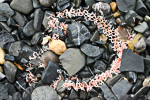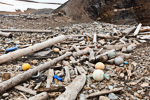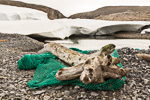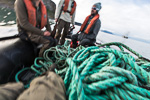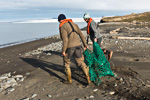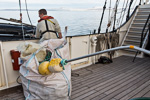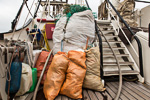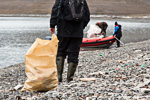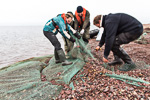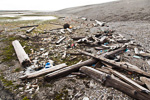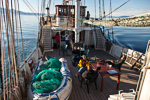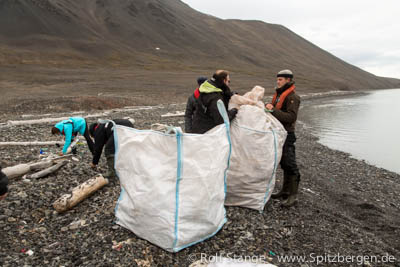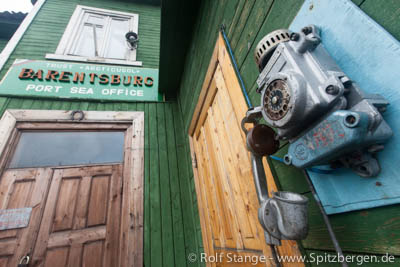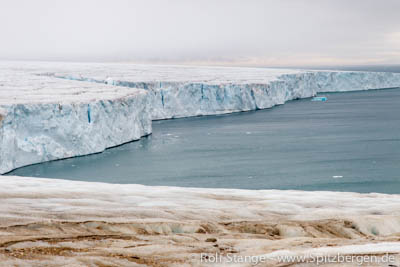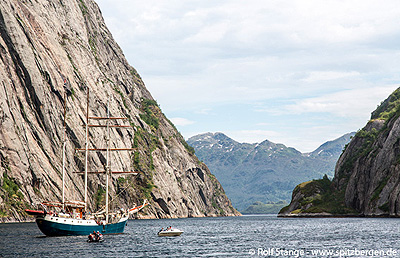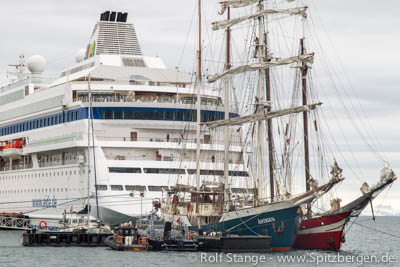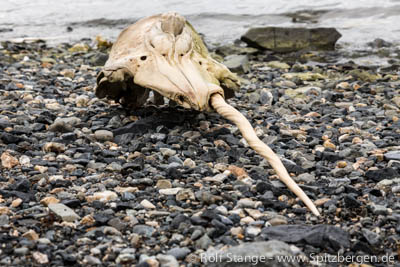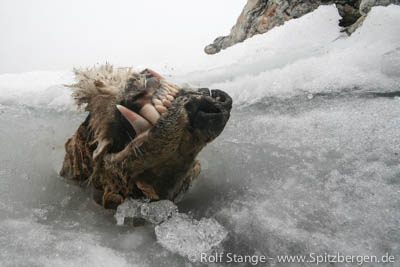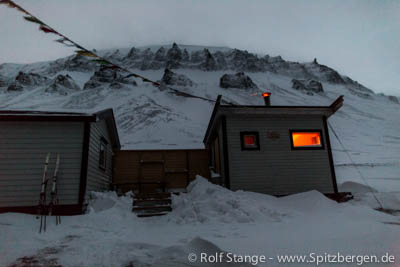-
current
recommendations- Liefdefjord
New page dedicated to one of Spitsbergen's most beautiful fjords. Background information and many photos.
- New Spitsbergen guidebook
The new edition of my Spitsbergen guidebook is out and available now!
- Liefdefjord
New page dedicated to one of Spitsbergen's most beautiful fjords. Background information and many photos.
Seitenstruktur
-
Spitsbergen-News
- Select Month
- April 2024
- March 2024
- February 2024
- January 2024
- December 2023
- November 2023
- October 2023
- September 2023
- August 2023
- July 2023
- June 2023
- May 2023
- April 2023
- March 2023
- February 2023
- January 2023
- December 2022
- November 2022
- October 2022
- September 2022
- August 2022
- July 2022
- June 2022
- May 2022
- April 2022
- March 2022
- February 2022
- January 2022
- December 2021
- November 2021
- October 2021
- September 2021
- August 2021
- July 2021
- June 2021
- May 2021
- April 2021
- March 2021
- February 2021
- January 2021
- December 2020
- November 2020
- October 2020
- September 2020
- August 2020
- July 2020
- June 2020
- May 2020
- April 2020
- March 2020
- February 2020
- January 2020
- December 2019
- November 2019
- October 2019
- September 2019
- August 2019
- July 2019
- June 2019
- May 2019
- April 2019
- March 2019
- February 2019
- January 2019
- December 2018
- November 2018
- October 2018
- September 2018
- August 2018
- July 2018
- June 2018
- May 2018
- April 2018
- March 2018
- February 2018
- January 2018
- December 2017
- November 2017
- October 2017
- September 2017
- August 2017
- July 2017
- June 2017
- May 2017
- April 2017
- March 2017
- February 2017
- January 2017
- December 2016
- November 2016
- October 2016
- September 2016
- August 2016
- July 2016
- June 2016
- May 2016
- April 2016
- March 2016
- February 2016
- January 2016
- December 2015
- November 2015
- October 2015
- September 2015
- August 2015
- July 2015
- June 2015
- May 2015
- April 2015
- March 2015
- February 2015
- January 2015
- December 2014
- November 2014
- October 2014
- September 2014
- August 2014
- July 2014
- June 2014
- May 2014
- April 2014
- March 2014
- February 2014
- January 2014
- December 2013
- November 2013
- October 2013
- September 2013
- August 2013
- July 2013
- June 2013
- May 2013
- April 2013
- March 2013
- February 2013
- January 2013
- December 2012
- November 2012
- October 2012
- September 2012
- August 2012
- July 2012
- June 2012
- May 2012
- April 2012
- March 2012
- February 2012
- January 2012
- December 2011
- November 2011
- October 2011
- September 2011
- August 2011
- May 2011
- April 2011
- March 2011
- February 2011
- January 2011
- December 2010
- November 2010
- September 2010
- August 2010
- July 2010
- June 2010
- May 2010
- April 2010
- March 2010
- February 2010
- November 2009
- October 2009
- August 2009
- July 2009
- June 2009
- May 2009
- April 2009
- March 2009
- February 2009
- January 2009
- December 2008
- November 2008
- October 2008
- August 2008
- July 2008
- June 2008
- May 2008
- April 2008
- March 2008
- February 2008
- April 2000
- Select Month
-
weather information

| THE Spitsbergen guidebook |
Home →
Yearly Archives: 2014 − News & Stories
MS Langøysund believed to pay illegally low wages
MS Langøysund is a day trip boat operating every summer from Longyearbyen in the Isfjord area. Every day from June to September, it is sailing to Barentsburg or Pyramiden, passing highlights of nature including glaciers and bird cliffs.
The ongoing season is, so far, not going too well for Langøysund and the owner company. A few weeks ago, the ship ran aground in Borebukta. The hull was damaged and the passengers had to continue their journey back to Longyearbyen on another ship. At least it did not take too long before Langøysund was repared and cleared for sailing again.
Now, the owner company, Henningsen Transport og Guiding (HTG) in Longyearbyen, is facing accusations of paying illegal low wages to the crew. Already in April, the responsible union (Norsk Sjømannsforbund) had to take action to make sure the crew, which is largely of Philippine nationality, is getting Norwegian contract, as required by Norwegian law for any ship sailing under Norwegian flag.
During a control in Longyearbyen it turned out that the crew has got Norwegian contracts, but is not getting the wages according to it. According to contract and Norwegian law, the minimum wage for crew on ships under Norwegian flag is 5,000 US-$ plus overtime pay, which can be expected to be significant. But according to Norsk Sjømannsforbund, the crew see hardly 1,500 US-$. Cooperation with the Philippines is difficult for the union, as they fear to be black-listed by their contracting agency even if their wages are, in theory, guaranteed by law.
According to the owner, HTG, the contract partner of the crew members is an agency in Manila, which is receiving payment from HTG to distribute it to the individual crew members. HTG states that contract and payment are correct and does not consider to provide documentation of payment to Norsk Sjømannsforbund as required. The union has set a deadline which ran out today (Thursday) at 9 a.m. As Norsk Sjømannsforbund has not received any payment documentation, they have now announced to arrest the ship.
HTG is facing similar accusations on MS Billefjord, another day trip boat, new in the business in Spitsbergen. In this case, HTG is not the owner, but largely responsible for the management.
MS Langøysund in Ymerbukta. Is the crew getting illegal low wages?
Source: Norsk Sjømannsforbund
Surge of ice cap Austfonna: time lapse video
Parts of Austfonna, the large ice cap on Nordaustland, have recently advanced rapidly or “surged”, as scientists call this behaviour, which is caused by glacier dynamics rather than climate change. See Austfonna: an ice cap on the move, Spitsbergen-Svalbard.com news earlier in June.
The Norwegian Polar Institute has published a time lapse video composed of about 1000 single satellite images that visualizes the surge of Austfonna impressively. Parts of the glacier front advanced more than 4 kilometres. The surge culminated in 2012.
More about surging glaciers in general and Austfonna in Rocks and Ice.
The surge of an ice cap of the size of Austfonna has consequences. It is currently by the largest contributor to global sea level rise in the whole Spitsbergen archipelago, with a contribution outweighing all other glaciers in Svalbard together. Locally, it may cause hazards to navigation: the density of icebergs is increased, and the pushing glacier front may have changed sea bottom topography.
Time-lapse video composed of about 1000 satellite images, showing the surge of Austfonna (© Norwegian Polar Institute, Screenshot). Click here to see the video on Youtube.
Source: Norwegisches Polarinstitut
Fredheim: virtual tour through Spitsbergen’s most famous trapper hut
Fredheim, Spitsbergen’s most famous trapper hut, is now accessible online in shape of a virtual tour. The wooden hut, with a luxurious two floors, was built and used by the legendary Norwegian hunter Hilmar Nøis. It is beautifully situated in Tempelfjord, but difficult to reach outside the snow mobile season, and if you manage to get there, then you will face closed doors.
Now it is possible to visit every room in Villa Fredheim (including the two adjacent huts) any time from anywhere without any effort: In late March, I have had the opportunity to panorama-photograph Fredheim in detail, and I have put the results together to create a virtual tour, which is now online, making it possible to visit Fredheim inside, every room. The tour runs automatically like a film; alternatively, it is possible to select individual rooms (panoramas). Short explanatory texts give some background information and stories from the wild years of the trappers in Spitsbergen.
The local newspaper Svalbardposten has already turned their readers’ attention to this possibility to visit Fredheim online. More than 1000 virtual visitors have been there within a few days, more than visited Fredheim physically at the “open day” that is held there twice during the winter season: the only possibility for the public so far to get some inside impressions from Fredheim.
Enjoy – this is the way to Fredheim 🙂
Fredheim, Hilmar Nøis’ in Tempelfjord, is not easy to get to and locked. But it is now possible to visit the famous hut virtually.
The Ocean Cleanup: solution for the global plastic pollution problem
Plastic pollution in the oceans is one of the truly threatening problems for the environment on a global scale, including the Arctic. You can see amazing amounts of plastics on many of Spitsbergen’s beaches, a lot from fisheries, but also everyday use plastic items including toothbrushes, lighters, bottles and so on and so forth. The list is endless. For an impression, have a look at the famous photos taken by photographer Chris Jordan on the remote Midway Islands in the Pacific: Albatross chicks who died with a stomach filled of plastic garbage, because it looked like food to their parents.
On almost every trip in Spitsbergen, we collect several cubic metres of plastic garbage from remote beaches, which has led to visible improvements in many places over the years (and by the way, nobody has the capacity to collect comparable amounts of plastics in such remote areas as tourist ships!). This is good, but obviously not the solution to a global problem.
Some impressions of plastic pollution on Spitsbergen’s beaches, from Bear Island in the south to Nordaustland in the far northeast, and of our efforts to clean some of these beaches.
- gallery anchor link: #gallery_475
Click on thumbnail to open an enlarged version of the specific photo.
Every day, plastic pollution is killing large numbers of fish, seabirds, mammals (from seals to dolphins and whales) and turtles in the world’s oceans. And probably even worse, once waves and UV radiation have grind the plastics down into microscopic particles, plankton is eating it, thus incorporating plastic in the food chain, where it is enriched on every trophic level upwards.
To really do something about plastic pollution, it would be necessary to:
- use much less plastic items in our everyday life. This is for everybody. How often do you throw a plastic bag away after having used it only once?
- replace plastics with bio-degredable materials. Next to consumers, industry, science and politics all need to do their homework to achieve this.
- reduce the incredible amounts of plastics already present in the world’s oceans today. And this is where it is currently getting interesting: after several years of work, The Ocean Cleanup has published a feasibility report, introducing a realistic concept to remove plastic pollution from the ocean on a globally relevant scale. The main idea is to let the currents do the main work: install shallow barriers that catch plastics and concentrate them so they are relatively easy to remove from the water. The water and animals keep drifting under the barrier to reduce by-catch. Costs are estimated at 4.50 Euro per kg plastic or 33 times less than other methods available, according to The Ocean Cleanup. The project claims that it should be possible to reduce the amount of plastics floating in the infamous Pacific Garbage Patch by 50 % over 10 years at costs small compared to the damage done by the plastics both to marine ecosystems and economies.
The impression remains that The Ocean Project is likely able to make a significant contribution to the solution of an urgent global problem, at a price more than reasonable. To lift the project up to the next level, 2 million dollars are to be collected via crowdfunding. At the time of writing (18 June), more than half a million have already been donated. The present author and owner of this website has already made his contribution and asks the reader kindly to consider a donation. If you have seen the amounts of plastics on remote beaches in Spitsbergen or elsewhere or if you have seen Chris Jordan’s above-mentioned photos, they you are probably happy to support The Ocean Cleanup. Click here to get to The Ocean Cleanup crowdfunding website.
And remember a cotton bag for your next shopping trip … 🙂
Crew and passengers of SV Antigua collecting plastic garbage in Woodfjord, north Spitsbergen. This is done on almost every trip, also by other ships.
Source: The Ocean Cleanup
Communication breakdown in Spitsbergen
It was a drastic experience which made pretty clear how remote and potentially vulnerable the communities in Spitsbergen still are: on Monday, almost 2 weeks ago (02 June), the communication between Spitsbergen and the outside world broke completely down for a couple of hours.
Some years ago, fibre cables between Spitsbergen and Norway have replaced earlier communication systems. The need to transfer large data volumes that come from satellite antennas near Longyearbyen (SvalSat, the white balls on Platåberget above the airport) to customers including ESA and NASA has made the cables necessary.
The high technology superfast connection failed completely on said Monday: the whole traffic between Spitsbergen and the rest of the world went down for several hours because of a problem in a relay station in Andenes (Vesterålen, north Norway), where the fibre cable reaches the mainland. The whole technical infrastructure is double to compensate for technical problems with parts of the system, but this time, the whole thing was dead for a while.
This did not just cut Longyearbyens inhabitants off from telephone and internet, but it made it impossible to reach police, rescue services and other vital services and infrastructure and it largely shut down internal communication within these bodies. The hospital in Longyearbyen relies on communication with the university hospital in Tromsø and the constant availability of air transport of patients to mainland Norway in difficult cases. Satellite phones were quickly put into use, but they require a view to the sky without any obstructions, which does not exactly apply to a medical doctor’s work place. Plus, there are many of them in Longyearbyen, and also this line of communication turned out unable to serve the amount of traffic: it was at times simply impossible to get through. Even in normal times, satellite phones are not exactly reliable.
The problem was solved after a few hours, but it made the potential for disaster quite clear. Especially representatives of vital infrastructure and public services such as police, rescue service and hospital made it clear that the availability of communication is of high importance for public safety and health.
Telenor, the Norwegian provider of communication services and infrastructure, is now working with authorities to make sure this does not happen again. But there is now talking about leaving some of the good old landline phones in place. Longyearbyen, because of its size, technical infrastructure and political circumstances a very modern place, is intended to be one of the first places in Norway without a landline phone system, where all communication is based on a mobile grid. The recent incident will be part of this debate, that’s for sure.
Works always: fire- and explosion-proof phone in Barentsburg. The problem is, you won’t get far with it …
Source: Svalbardposten
Austfonna: an ice cap on the move
The ice cap Austfonna is covering large parts of Nordaustland, the second-largest island in the Spitsbergen archipelago. The total surface area of Austfonna, actually a composite of several smaller ice caps, is more than 8400 square kilometres.
For decades, Austfonna was considered to be relatively stable: it did not suffer massive loss of volume as many other glaciers in Spitsbergen and elsewhere in the Arctic. More recently, marginal parts were thinning while central parts were gaining thickness, a behaviour known to prepare a surge if it lasts for some time. A surge is a sudden advance where a glacier can move forward over many kilometres within a year or two, it is a result of glacier mechanics and not of climate variations (see Rocks and Ice for more about glaciers and surges). Also parts of Austfonna are known to have surged in the past, for example Bråsvellbreen, the southern part of the ice cap, in the 1930s.
Information from satellite images has now yielded evidence for increased velocity over large parts of Austfonna. The ice cap is pushing into the Barents Sea, producing vast amounts of icebergs and thus contributing significantly to global sea level rise, currently more than all other glaciers in Spitsbergen together. Nevertheless, scientists involved in observing Austfonna assume it will increase its volume in the years to come.
AECO, the arctic expedition cruise organization, has issued a warning to navigate carefully in these waters, as larger numbers of icebergs than usual and changes of the glaciated coastline have to be expected.
Such an event, where an ice cap of thousands of square kilometres starts to move more rapidly, is unique during the period of detailed scientific observation and regular touristic access. The recent observation is based on data from the European satellite Sentinel-1a. One reason these data have drawn more than just a little bit of attention is the fact that the satellite had, at the time in question, not even fully reached its orbit, but was nevertheless able to produce high quality data.
The ice cap Austfonna on Nordaustland has started to move more rapidly on large parts of its huge area.
Source: BBC News.
The long migration of polar bear Kara
Polar bears in Spitsbergen are tagged with satellite transmitters every year by the Norwegian Polar Institute. It is possible to follow some of them on a WWF website on their migrations.
In many cases, the female bears stay within a more or less limited area for quite some time. But polar bear Kara has recently beaten all records: tagged in January 2013 on a glacier between Hornsund and Hambergbukta on Spitsbergen’s east coast, she made a migration of an incredible 3703 km within less than a year. She started towards Novaya Zemlya and then went north towards Franz Josef Land, but so far without going on land anywhere. She then went even further east to Severnaya Zemlja, where she finally spent some time ashore after having crossed the Kara Sea completely. Kara finally went west again to Franz Josef Land, where the sender stopped transmitting data. She might have gone into a snow cave to give birth to polar bear babies – maybe she is happy mother of two little polar bears by now …?
The female polar bear Kara was, at the time of tagging, 13 years old, 2.2 m long and weighs a moderate 217 kg.
Generally, data from the most recent tagging season in spring 2014 may suggest that female polar bears have currently got less offspring than in other years: only 3 out of 29 females had cubs in their second year, the normal rate should be somewhere near one third. But the total number is too low to fully exclude coincidence.
Marking and tagging polar bears is controversial, as tranquilizing the bears while following them with a helicopter is quite stressful for the animals and there are cases when the bear did not survive. This happened in October 2013 on Edgeøya (eastern Spitsbergen) and possibly again in April 2014. In the latter case, however, the exact cause of death is not yet certain. In spring 2014, a total of 73 polar bears have been tranquilized and examined in Spitsbergen.
The migration of polar bear Kara from Spitsbergen to the Russian Arctic. Image source: WWF
Source: WWF, Svalbardposten
Arctic 2014: Lofoten, Bear Island, Jan Mayen, Spitsbergen
The arctic summer season 2014 is just about to begin: tomorrow we will start with SV Antigua in Bodø, sailing to Lofoten and then northwards to Bear Island and Spitsbergen.
In July, I will be in Jan Mayen and then return to Spitsbergen for several trips lasting into September. So it will be worth checking the photos and triplogs regularly!
Lofoten: the beginning of a long arctic summer. Antigua in Trollfjord, 2013.
Evolution of Polar bears
The evolution of Polar bears is still a matter of scientific debates. Fossils and accordingly data are scarce. Traditionally it has been believed that the species is very young, only between 100,000 and 200,000 years old. Ages putting the origin of the species back into mid or early Pleistocene times have also been suggested (see also Spitsbergen-Svalbard.com news from April 2012: Species “polar bear” older than believed so far).
A recent publication based on genetical studies now suggests that Polar bears are separated from Brown bears since 479,000–343,000 years ago, which is, within error limits, in accordance with other previous, but also quite recent, studies (see link above). Evidence is thus increasing that the evolution of Polar bears goes back to the mid-Pleistocene, the middle of the last (and still ongoing) ice age, which started about 2.6 million years ago.
The question is not only of scientific interest: If the species was as young as 100,000 years, then the current warm period would be the first challenge of this kind in the history of the species. But if the species is nearly half a million years old, as suggested in this most recent study, then Polar bears have, during their evolution, already survived more than one warm period in the past, which indicates an ability of the species to survive warmer conditions. Which is obviously not a guarantee for the survival of Polar bears through rapid changes into even warmer climates, but sheds some light on the ongoing debate of Polar bears in a changing climate.
Polar bears: their evolution probably goes several hundred thousand years back. And the photo was taken in Spitsbergen, not in the zoo.
Source: Cell
Cruise tourism statistics in Spitsbergen: declining numbers
In April, the latest statistics on cruise tourism in Spitsbergen were published by the Sysselmannen. They give detailed information about the development of this tourism sector until 2013. Against common belief, there is no indication for an increase of cruise tourism.
The number of big cruise ships visiting Spitsbergen as one of several parts their route remained almost unchanged (27 in 2013, 28 in 2012). As some of the ships make several trips per season, the number of trips is a little higher (33 trips in 2013, 36 in 2012). In contrast, a significant decline is indicated by the number of passengers: After an extraordinary increase in the record year 2012 (42,363 passengers) this figure went down to 36 257 in 2013. In the years before, there was a decreasing trend in the number of trips (from 50 in 2005 to 28 in 2011) as well as in the number of passengers (from 32,781 in 2007 to 24,187 in 2011).
The figures are presented in the Sysselmannen´s annual report on tourism. The statistics make a distinction between the big cruise ships, visiting Spitsbergen as one of several destinations on their route, and smaller expedition ships. In contrast to cruise ships, expedition ships travel primarily or exclusively in the waters around Spitsbergen. They usually start and end their trips in Longyearbyen. In the last year the sizes of these ships varied between 5 and 300 passengers. The category of expedition ships includes small yachts, mostly in local ownership, sailing ships like Noorderlicht and Antigua as well as larger ships like Plancius and Ortelius operated by Oceanwide Expeditions or Quest and Ocean Nova operated by Polar Quest. The number of expedition ships went down significantly in 2013 compared to 2012 from 35 to 24. Here too, the year 2012 was an all-time high. On the other hand the number of passengers was lower in 2012 than in 2013. With 9,277 it ranged within the trend of the previous years. 2013 however with 10,530 the number of passengers on expedition ships was for the first time higher than in the former record year 2008 with 10,040 passengers.
The figures do not indicate a clearly defined picture. Looking at both categories ‘big cruise ships’ and ‘smaller expedition ships’ together, the total number of passengers went significantly down from 51,640 to 46,787, compared to the record year 2012. The relatively strong decline on cruise ships is accompanied by a moderate increase on expedition ships. A clear overall trend cannot be identified. The often heard argument, that ship-based tourism in polar areas is growing rapidly and in an uncontrolled way, is however disproved by the figures, concerning Spitsbergen (this holds true also for Antarctica in a similar way, see antarctic.eu-news May 2014). Considering the decline in cruise tourism in Greenland since 2010 such arguments must be seen as a myth. Though, in the past they were used to reason for restrictive legislative amendments concerning tourism (see spitsbergen-svalbard.com-news April 2014).
Including the land based tourism, the total number of tourists visiting Spitsbergen has increased in 2013, as the Sysselmannen´s report also shows. The number of guest-nights in Longyearbyen climbed markedly from 84,643 (2012) to 107,086 (2013) and the number of flight passengers from 40,153 (2012) to 47,645 (2013). Land based tourism is basically concentrated in and around Longyearbyen, with a focus on on snowmobile trips followed by dog sledge excursions and other activities.
Cruise tourism in Spitsbergen involves a range of ships from yachts and sailing boats to large ocean liners.
Source: Sysselmannen
Spitsbergen panorama site: now better and bigger
The Spitsbergen panorama site has not only grown quite a lot recently, but it is also structured a much better way now. The growth over the last months was bigger than expected and made it necessary to improve the structure to make it easier to find a panorama for a site or to know where a certain panorama was taken. Small maps are now being added to individual areas to make navigation easier.
Also the number of panoramas has increased greatly over the last couple of months, and there is definitely more to come!
Enjoy the Spitsbergen panorama site.
One of many Spitsbergen panoramas: Many smaller icebergs with fantastic shapes and colours are frozen in the fast ice of Mohnbukta. These images were taken inside an iceberg that had several old meltwater caves.
Record-breaking number of participants at Spitsbergen Skimarathon
At this year’s Spitsbergen Skimarathon, which took place today (03 May), the number of participants was above 800, so far an all-time record. Amongst the participants was Jens Stoltenberg, former head of the Norwegian government and next general secretary of Nato.
The skiers could enjoy a perfect early May day with blue skies, sunshine, calm air and temperatures slightly below zero. The Norwegian Eldar Rønning was, as expected, fastest man. Amongst the women, Celine Brune-Lie was the first one to complete the marathon distance.
On June 07, marathon runners from many countries will start for the northernmost regular marathon that is held annually.
Spitsbergen Skimarathon (archive image, 2013).
Narwhale´s tusk serves as a sensory organ
The remarkable and unique tusk of the narwhale serves as a sensible sensory organ which enables the animals to sense changes in their environment. Scientists were now able to confirm this assumption.
Narwhales are, together with white whales (belugas), part of the Monodontidae family. They live in the Arctic Ocean, especially west and east of Greenland, around Spitsbergen and north of the Siberian coast.
The main characteristic of the narwhale is it´s up to 2,60m long tusk. It usually grows from the males left canine tooth, breaking through the upper lip in a spiral rotation. In single cases a second tusk can grow from the right canine tooth. It is also possible that female individuals have one or two tusks but this is rather uncommon.
In history there were many differing theories trying to explain the function of the narwhale´s tusk. Today there are two common explanations: They serve as a distinguishing attribute for males, to maintain hierarchies and as a sensory organ.
Dr. Martin Nweeia from the Harvard School of Dental Medicine (HSDM) is part of an international group of scientists who study the function of the narwhale´s tusk. They were now able to confirm their assumption that the tusk serves as a sensible sensory organ. In previous studies there was pointed out that the narwhale´s tusk, differing from other mammal teeth, is not covered by an enamel which protects the tooth against external influences. Now the scientists could reveal that the outer layer of the tusk, the cementum, is porous and that the inner layers contain microscopic tubes leading to the center of the tooth. So the material of the tooth is rigid but permeable. In the inner core of the tusk, in the pulp, the scientists could find nerve endings connected to the whale´s brain. With this structure the tusk is sensible for changes in the external environment such as changes in temperature, salt level in the water or other chemical parameters. Experiments could show that the whale´s heart rate changed when the tusk was exposed to different salt levels in the water.
It is suggested that the ability of the tusk serves the male individuals to find food or to find females and to evaluate their willingness to mate.
The scientists are now interested in the question if the narwhales unique ability to use a tooth as a sensory organ is an evolutionary advancement or an ability which is left from a former stage of development.
Tusk and skull of a narwhale, stranded in Bellsund, Spitzbergen.
Source: BBC Nature News
Polar bear found dead in Petuniabukta had been anaesthetised for scientific purposes
Initially, it seemed to be a very normal, natural course of things when locals from Longyearbyen found a dead polar bear in Petuniabukta, near Pyramiden, on 07 April. Soon, however, it turned out that the animal had been anaesthetised for scientific purposes just a few days before, on 04 April. The body was consequently brought to Longyearbyen for a postmortem.
In contrary to early local rumours, it has been stated that outer injuries, as might have been caused by another bear, are not present. Other polar bears pose a real threat to anaesthetised bears. The cause of death is at present unclear. Tissue samples have been taken for further investigations, but it may take weeks until results are available.
Anaesthetisation of polar bears can have secondary effects which may be lethal in extreme cases. Once scientific works are finished, the animals are not being surveyed any further. Other bears may do harm to defenceless polar bears. Also a change of position can inflict suffocation. This is what happened to a polar bear found dead on Edgeøya in September 2013, which had been anaesthetised shortly before (see Spitsbergen-Svalbard.com news: Polar bear dead after anaesthetisation by scientists)
Anaesthetisation of polar bears, which includes following them with a helicopter, is a traumatic experience for the animals with secondary effects that are obviously potentially very dangerous. Population data are, in Spitsbergen, not needed for administrative purposes: here as well as in the neighbouring Russian Arctic, polar bears are completely protected. There is no active management such as the fixing of an annual quota for hunting. Threats are more global, mainly climate change and long-lived environmental pollution, and cannot be managed regionally.
In late summer 2012, a polar bear family with two first year cubs were anaesthetised in Billefjord. The family showed significant behaviour changes at least for a while, pointing to the stress such an experience involves for the animals (see Chasing polar bears with helicopter in the name of science, October 2012). It is possible that the bear found dead now is one of the two little cubs of the family in Billefjord seen by many in Billefjord in 2012: it was a 1.5 year old female.
Not always the natural way of life: dead polar bear (archive photo, Nordaustland).
Source: Svalbardposten (16/2014)
First photo galleries from the Arctic 2014
Photo galleries from the current arctic spring are now getting online on this website. A small collection of photos from late March makes the beginning – back then, it was still getting dark at nighttime! Unbelievable …
Over the next weeks and months, much more will follow, from the ongoing spring season with snow mobile and ski trips in the arctic winter to the summer sailing season in Spitsbergen and Jan Mayen. So it will be worth to come back and check the photo galleries and travel reports/triplogs regularly!
Beyond this, new polar panorama photography is currently in preparation for publication on this website.
In late March, it was still getting dark at night time. That made the fire in a wood burning stove in a cosy cabin even nicer!
News-Listing live generated at 2024/April/19 at 10:43:37 Uhr (GMT+1)

